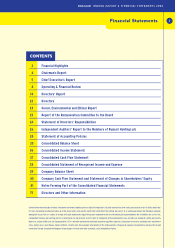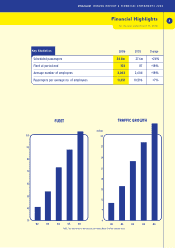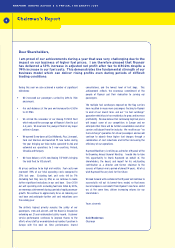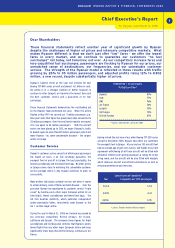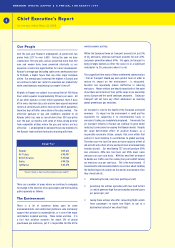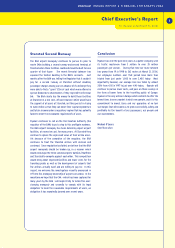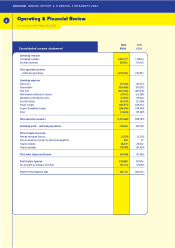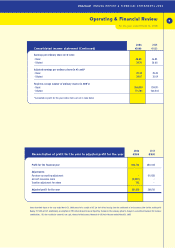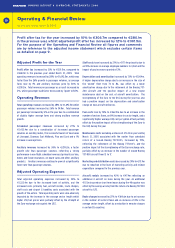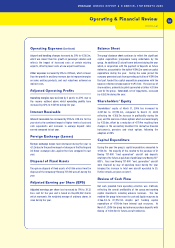Ryanair 2006 Annual Report Download - page 7
Download and view the complete annual report
Please find page 7 of the 2006 Ryanair annual report below. You can navigate through the pages in the report by either clicking on the pages listed below, or by using the keyword search tool below to find specific information within the annual report.
Stansted Second Runway
The BAA airport monopoly continues to pursue its plan to
waste £4bn building a second runway and second terminal at
Stansted when these facilities could and should be built for one
quarter of that figure. The recent Ferrovial takeover has
exposed the feather bedding in the BAA's accounts. Just
months after the BAA was telling the Regulator that it couldn't
pay for a second runway at Stansted without doubling
passenger charges (many years in advance of its delivery) they
were able to find a “spare” £1bn of cash which were offered in
special dividends to shareholders if they rejected the Ferrovial
bid. The BAA clearly has the money to build these facilities
at Stansted in a low cost, efficient manner which would have
the support of all users at Stansted, yet they persist in trying
to waste £4bn so that they can boost their capital expenditure
and future income under a regulatory regime that has patently
failed to meet the reasonable requirements of users.
Ryanair continues to call on the Civil Aviation Authority (the
regulator of the BAA) to put a stop to this profligate madness.
The BAA airport monopoly has been delivering abject airport
facilities, at excessive cost, for many years. At Stansted they
continue to ignore the expressed views of their airline users.
Yet because of the cowardice of the regulator, the BAA
continues to treat the Stansted airlines with derision and
contempt. Since regulation has failed, we believe that the BAA
airport monopoly should be broken up, in a manner which
would encourage the three London airports Gatwick, Heathrow
and Stansted to compete against each other. This competition
would bring about improved facilities and lower costs for the
travelling public as well as the development of airports that
the airlines actually want and are willing to pay for. In this
regard, we welcome the investigation recently announced in
OFT into this monopoly ownership of airports in London. In the
meantime we hope that the CAA - which has been captured for
many years by the BAA - will begin firstly to tackle this over-
charging monopoly and secondly to comply with its legal
obligation to meet the reasonable requirements of users, an
obligation it has repeatedly ignored over recent years.
Conclusion
Ryanair has over the past nine years as a public company seen
its traffic mushroom from 3 million to over 35 million
passengers per annum. During that time our route network
has grown from 19 in 1998 to 262 routes at March 31, 2006.
Our employee numbers over that period have more than
tripled from just under 1,000 to over 3,450 today. Most
importantly however, our average fare has fallen by almost
20% from 50 in 1997 to just over 40 today. Ryanair will
continue to pursue lower costs, and pass on these savings in
the form of lower fares to the travelling public of Europe.
Ryanair is the only airline in Europe which commits to offer the
lowest fares in every market in which we operate, and it is this
commitment to lowest fares and our guarantee of no fuel
surcharges that will enable us to grow successfully, safely and
profitably for the benefit of our passengers, our people and
our shareholders.
Michael O'Leary
Chief Executive
for the year ended March 31, 2006
Chief Executive’s Report 7
ANNUAL REPORT & FINANCIAL STATEMENTS 2006

